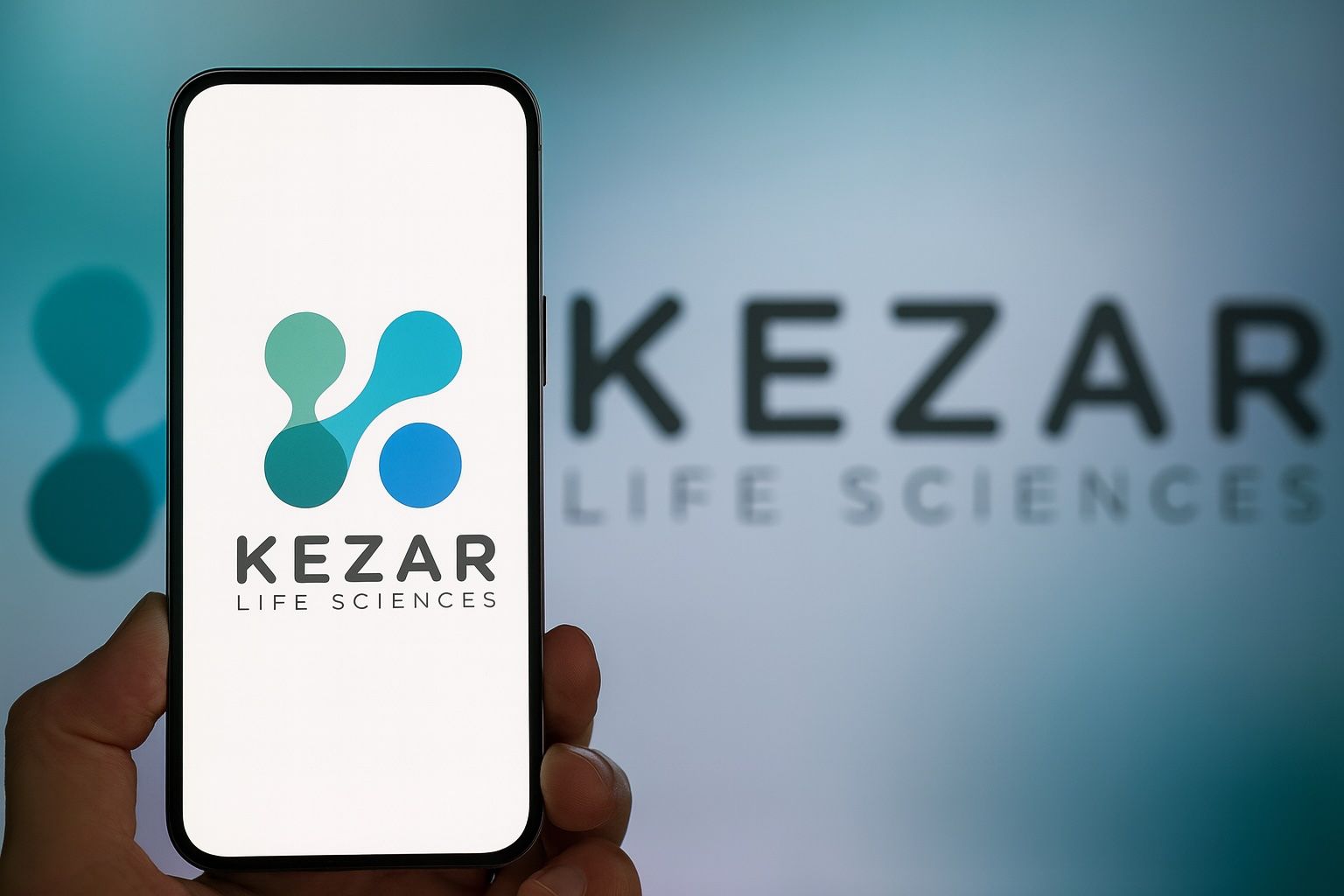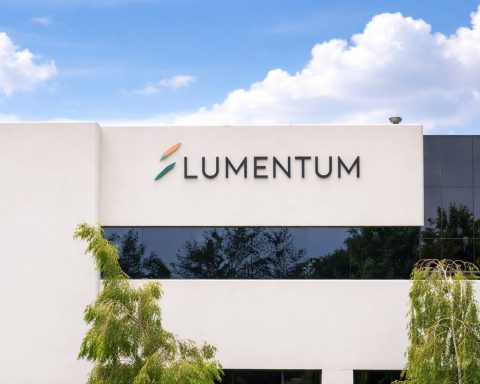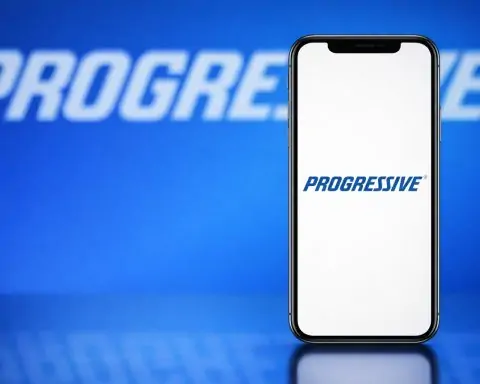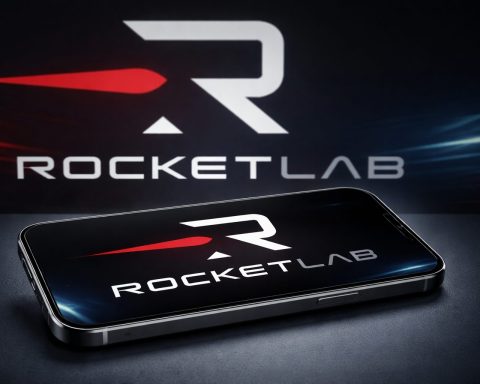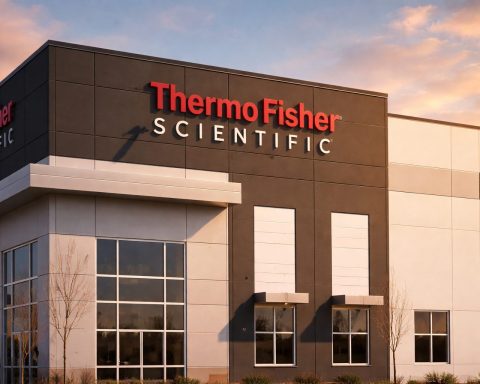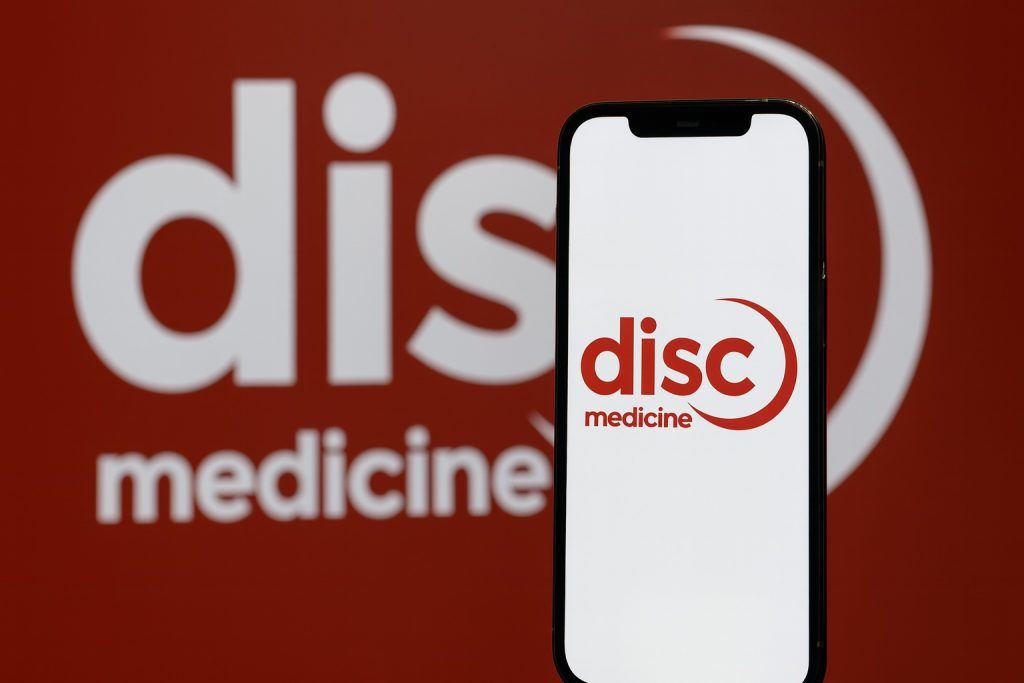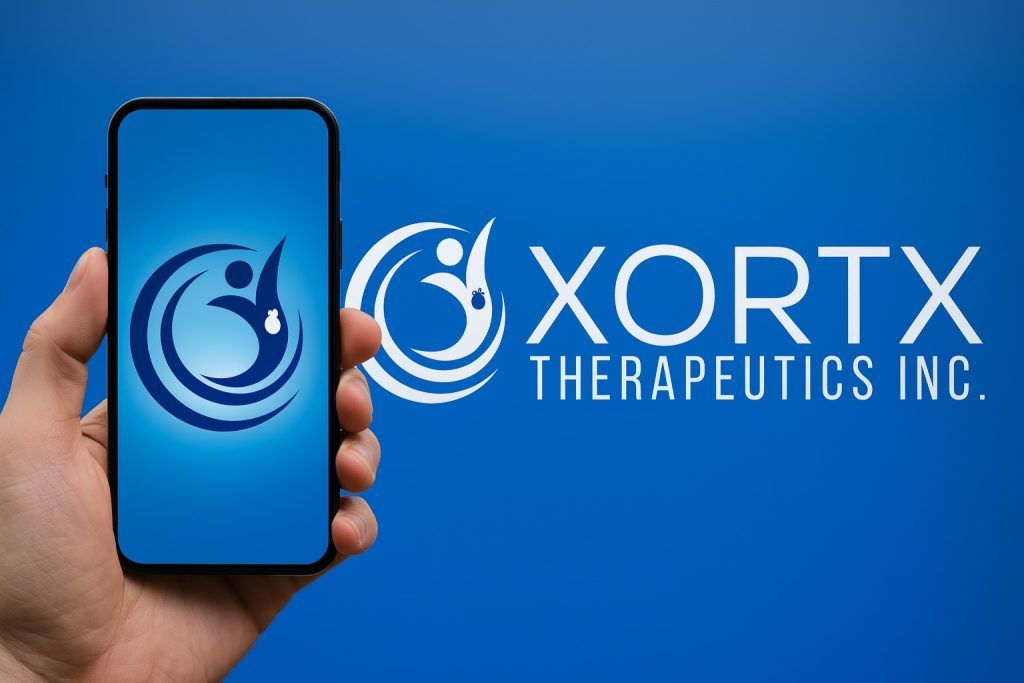- Regulatory Roadblock: Kezar Life Sciences (NASDAQ: KZR) announced that the FDA canceled a key meeting and imposed new trial requirements for its lead drug zetomipzomib in autoimmune hepatitis, delaying the program by about two years [1] [2]. In response, the company is exploring “strategic alternatives” (including a potential sale or merger) and implementing cost-cutting measures [3] [4].
- Shares Skyrocket: Despite the setback, KZR’s stock surged ~40% on the news, jumping from the mid-$4 range to around $6 per share on Oct. 17 [5]. Investors appear to be betting on a possible buyout or other value-maximizing move as Kezar undertakes its strategic review.
- Analyst Reactions: Experts reacted swiftly. Jefferies downgraded KZR from Buy to Hold and slashed its price target to $7 (from $18), essentially valuing the company at just its cash on hand [6] [7]. Wells Fargo likewise cut its target from $7 to $5 while maintaining an “Equal-Weight” (neutral) rating [8]. William Blair downgraded the stock to Market Perform (no target given) after the news [9].
- Financial Position: Kezar reported approximately $90.2 million in cash as of Sept. 30, 2025 [10], giving it some runway. However, the FDA’s demands would add costly studies and monitoring, and the firm is quickly burning cash (about $64M in negative free cash flow over the last year) [11]. The Board has extended a stockholder “poison pill” rights plan into 2026 to fend off unwanted takeovers during this review period [12].
- Background – Pipeline & Past Challenges: Kezar is a clinical-stage biotech developing drugs for autoimmune disorders and cancer. Its lead candidate zetomipzomib (KZR-616) showed promising Phase 2 results in autoimmune hepatitis (AIH) earlier this year [13]. The company had halted its lupus nephritis program in 2024 after safety issues (four patient deaths) and an FDA hold [14], refocusing entirely on AIH. Kezar even scrapped a cancer drug (KZR-261) mid-Phase 1 due to lackluster results, to conserve resources for zetomipzomib [15] [16]. Last year, management rejected a buyout offer of $1.10 per share plus a contingent value right from Concentra (Tang Capital), calling it substantially undervalued [17]. With shares now around $6, that decision appears vindicated, though the road ahead remains uncertain.
FDA Setback Triggers Strategic Review
Kezar Life Sciences revealed a major regulatory setback for its lead drug and immediately pivoted to consider strategic alternatives. In an October 16 press release, the South San Francisco company announced it failed to reach alignment with the U.S. Food and Drug Administration on the design of a pivotal trial for zetomipzomib in autoimmune hepatitis (AIH) [18]. The FDA abruptly canceled a Type C meeting that was scheduled for Q4 2025 to discuss Kezar’s proposed Phase 3 trial, and instead requested a new standalone study to characterize zetomipzomib’s pharmacokinetics in patients with severe liver impairment [19] [20]. The agency also mandated 48-hour in-patient monitoring for future trials [21] – an onerous requirement that Kezar says would likely hinder patient enrollment.
This one-two punch from regulators would delay any new AIH trial by roughly two years, the company warned [22]. “We are incredibly disappointed with the unusual decision by the FDA to cancel our Type C meeting,” said CEO Chris Kirk, PhD, noting the team had provided extensive safety/efficacy data and a risk mitigation plan for outpatient dosing [23] [24]. Kirk added that while Kezar remains excited about zetomipzomib’s potential to be the first approved therapy for AIH, the company “lacks the resources to extend the development timeline” given these new hurdles [25] [26].
Facing this protracted timeline and resource strain, Kezar’s board and management have decided to explore “a full range of strategic alternatives” to maximize shareholder value [27]. In practice, this phrase signals that the biotech is open to options such as a potential sale, merger, partnership, or other corporate transactions. To assist in the review, Kezar has retained investment bank TD Cowen as a financial advisor [28]. The company also initiated a restructuring plan with workforce reductions and other cost-cutting to conserve cash during the process [29].
Importantly, Kezar extended its limited-duration stockholder rights plan (often called a “poison pill”) through at least the 2026 annual meeting [30]. This move is intended to prevent any hostile takeover attempts – a real consideration since Tang Capital’s Concentra Biosciences already owns ~9.9% of Kezar and made an unsolicited bid last year [31]. The rights plan would penalize any investor who tries to acquire more than 10% of shares without board approval [32], thus giving Kezar breathing room to conduct an orderly strategic review. “The rights plan should reduce the likelihood that any person or group gains control of Kezar through open market accumulation without paying all stockholders an appropriate control premium,” explained board chairman Graham Cooper when the plan was first adopted [33] [34].
Company officials caution that there’s no guarantee this process will result in a deal or any specific outcome [35]. No timetable has been set for completing the review. Kezar says it will not provide further updates on the process or its R&D programs until they either strike a deal or determine no transaction is forthcoming [36].
Stock Soars on Buyout Speculation
News of the strategic review – often a code word for shopping the company – sent Kezar’s stock price rocketing despite the clinical setback. In after-hours trading on Oct. 16 and into the morning of Oct. 17, KZR shares jumped by roughly 38–46% [37] [38]. The stock, which closed around $4.14 on Oct. 13 prior to the announcement [39], surged to approximately $5.70–$6.20 per share on Friday, hitting its highest levels in months.
By mid-morning Oct. 17, KZR was trading near $6.20 (up ~49% on the day) [40] [41], before settling around the mid-$5 range later in the session, according to intraday data. The sharp rise came “despite the … regulatory setback”, as Investing.com noted, because investors focused on the upside of a potential strategic deal [42]. In essence, the bad news had already depressed the stock, and the possibility that Kezar might sell itself or its assets at a premium suddenly made the shares more attractive.
This counterintuitive rally is not uncommon in biotech: when a small drug developer signals it may pursue a sale or partnership, markets often react optimistically on hopes that a larger pharmaceutical company could step in with an acquisition offer. In Kezar’s case, the company’s market capitalization at Thursday’s close was only about $30 million [43], versus over $90 million in cash on the balance sheet – a discrepancy suggesting the stock was heavily discounted. Indeed, Jefferies analysts pointed out that their new $7 target “essentially values the company at its cash per share” (net of expected wind-down costs) [44]. With shares still trading below cash value even after the pop, arbitrage traders may see room for further upside if a buyer emerges.
Another factor likely boosting the stock is that Kezar’s AIH drug data itself is solid, even if the FDA is dragging its feet. Back in March, the Phase 2a PORTOLA trial of zetomipzomib in autoimmune hepatitis met its goals, with 36% of treated patients achieving a complete response and steroid taper (versus 0% on placebo) over six months [45] [46]. The drug showed a favorable safety profile in that study [47]. Those results will be presented as a late-breaking oral presentation at The Liver Meeting 2025 on Nov. 10 [48]. If a larger pharma company believes zetomipzomib has long-term potential in AIH (a rare disease with no approved treatments), they might view Kezar as an attractive takeover candidate – especially at a price not far above the cash on hand. This speculation underpins the recent bullish trading in KZR, even as the company’s independent path forward has become murkier.
Analysts: Downgrades and Cautious Optimism
Wall Street analysts swiftly revised their outlook on Kezar in light of the FDA impasse and strategic uncertainty. Investment bank Jefferies was quick to downgrade the stock, with analyst Maury Raycroft moving KZR from a Buy to a Hold rating and cutting the 12-month price target from $18 down to $7 [49]. In a note to clients, Raycroft explained that the FDA’s stance on AIH is a significant blow – the firm has now lowered its estimated probability of success for zetomipzomib to just 10%, from 25% previously [50]. The new $7 target, he wrote, basically “values the company at its cash” and assumes minimal credit for the AIH program’s future unless a strategic buyer steps in [51].
Wells Fargo’s biotech analyst Derek Archila maintained a neutral “Equal-Weight” rating but likewise trimmed his price target to $5 (from $7) [52]. The 28% cut reflects “potential market concerns or revised financial expectations” after the FDA setback [53]. William Blair also threw in the towel on prior optimism – analyst Matt Phippsdowngraded KZR to “Market Perform” (from Outperform) on Oct. 17, acknowledging that the company’s risk/reward profile has fundamentally changed [54]. Notably, Phipps did not issue a new price target, signaling uncertainty about valuation until strategic options are clearer [55].
The broader analyst community has shifted to a more guarded stance. According to MarketBeat data, Kezar now has 0 Buy ratings, 4 Holds, and 1 Sell, giving it a consensus rating of “Reduce” (effectively a cautious Hold) [56] [57]. The average price target among five recent analysts is approximately $6.00, with a high estimate of $7 and a low of $5 [58]. This range brackets the current share price, suggesting that Wall Street sees limited upside unless new developments unfold. In fact, at the moment the average target implies a slight downside to the latest price around $6 [59].
Some analysts remain on the sidelines awaiting more clarity. HC Wainwright, for example, had already rated Kezar Neutral back in July [60], and others had tempered their expectations after prior clinical hiccups. On the positive side, Kezar’s cash-rich balance sheet provides a backstop value that analysts frequently mention. “The company reported ~$90 million in cash, which essentially underpins our valuation floor,” noted one report [61]. With Kezar’s market cap still hovering near or even below its cash level, several analysts argue that downside risk is buffered – especially now that costly trials may be halted and a strategic deal could unlock that cash value for shareholders [62].
In conference calls earlier this year, CEO Chris Kirk emphasized that the AIH program addresses a critical unmet need (an estimated 100,000 patients in the U.S. suffer from autoimmune hepatitis with no approved therapies) [63] [64]. Some experts still see long-term promise. “Despite current challenges, two analysts have recently revised their earnings estimates upward for the upcoming period,” noted InvestingPro’s analysis, hinting that there is residual optimism about Kezar’s prospects if the FDA can eventually be convinced [65]. However, until the path forward is clarified – either via a partner with resources to meet the FDA’s demands, or a buyout – analysts are predominantly advising caution and pricing the stock for a wait-and-see scenario.
Company Background and What’s Next
Founded in 2015, Kezar Life Sciences specializes in small-molecule therapies for immune-mediated diseases and cancer [66]. Its flagship compound zetomipzomib (also known as KZR-616) is a first-in-class selective immunoproteasome inhibitor. The idea is to dial down the immune system’s destructive overactivity in diseases like lupus and AIH, without the broad side effects of steroids. Zetomipzomib was initially tested in lupus nephritis, a kidney complication of lupus, where it showed some early promise. However, in mid-2024 the lupus program was derailed by patient safety events – four patient deaths led to an FDA hold and ultimately Kezar discontinued its Phase 2 lupus trial (codenamed PALIZADE) [67]. The company pivoted to focus solely on the AIH indication thereafter [68]. (Notably, Kezar’s Asian partner Everest Medicines continues to study zetomipzomib in lupus nephritis in China and Asia, with data expected in 2026 [69], but Kezar itself has de-prioritized lupus in the West.)
Kezar’s only other drug candidate, KZR-261, originated from its protein secretion inhibition platform and was aimed at solid tumor cancers. But that program struggled to show clear benefit: a Phase 1 trial in 61 patients yielded no objective tumor responses (though a few patients had stable disease) [70] [71]. In August 2024, management halted KZR-261 development to conserve cash for zetomipzomib’s trials [72] [73]. This tough decision came alongside a major restructuring in late 2023 that saw Kezar lay off 41% of its staff and replace its CEO – co-founder John Fowler stepped down, with Dr. Chris Kirk (then President and CSO) taking the helm [74] [75]. Kirk has since led the slimmed-down company in a single-minded pursuit of AIH approval.
One could say Kezar has already endured a “strategic alternative” once: Tang Capital’s Concentra Biosciences attempted to acquire Kezar in 2024 when the stock was languishing under $1. Tang – known for buying struggling biotechs – offered $1.10 per share in cash plus a contingent value right (CVR) for future pipeline proceeds [76] [77]. Kezar’s board flatly rejected the bid as too low, noting the offer “was materially below [our] available liquidity” and didn’t reflect zetomipzomib’s potential [78]. At the time, that stance raised some eyebrows since the bid actually exceeded the market price (shares hadn’t traded above $1 in months) [79]. But Kezar’s leadership insisted the market was undervaluing the company’s fundamentals [80]. With hindsight, after positive AIH data lifted the stock into the $4–$5 range in 2025, Kezar vindicated its decision to hold out. Shareholders who stuck with the company have fared far better than if they’d sold at $1.10. Tang’s Concentra, which remains a 9.9% stakeholder, effectively got blocked by the poison pill and did not renew its bid (it has taken over other biotechs, like Jounce Therapeutics and Theseus Pharma, in similar fashion [81]).
Now, however, Kezar is voluntarily seeking a suitor or partner under more favorable circumstances. The company’s cash pile of around $90 million (as of the end of Q3) gives it some leverage to negotiate; it is not in immediate danger of insolvency [82]. Still, time is not unlimited. Kezar has been burning roughly $15–20 million per quarter on R&D and operations, though recent cutbacks will slow that burn [83]. Jefferies estimates that winding down trials and other restructuring could cost about $25 million (including paying off $9.7M in debt) [84]. At the current spending pace, cash might last into late 2026 if no new trials are started – a window in which Kezar aims to execute a strategic deal or find a path forward. If no buyer or major investor emerges, the company could opt to preserve cash and wait out the FDA’s requirements, but management has signaled that would be difficult without outside help [85] [86].
On the institutional investor front, there have been some intriguing moves. Armistice Capital, a healthcare-focused fund, took a new stake in Kezar earlier in 2025 – adding over 1.09 million shares in Q2 (a 760% increase) to become a notable holder [87]. This suggests at least one savvy investor saw deep value in Kezar following the March AIH trial results. Insiders, too, have shown confidence: Kezar’s CEO Chris Kirk purchased shares on the open market during 2023 and 2024’s lows (and other insiders have generally been buyers, not sellers, in recent years). Such insider buying can be interpreted as a sign that those closest to the science believe brighter days lie ahead. Meanwhile, Tang’s stake signals that Kezar remains on acquirers’ radars – the poison pill only buys time, it doesn’t preclude a negotiated acquisition if terms are agreeable.
Looking forward, Kezar’s next scheduled catalyst would have been the initiation of a Phase 3 AIH trial, but that is now on indefinite hold pending the strategic review and additional FDA-required study. Investors will be watching The Liver Meeting on Nov. 10, where Kezar’s team will present full PORTOLA Phase 2a data [88]. Robust data there could reignite interest from potential partners. Any hint of FDA flexibility or willingness to reconsider its stance (perhaps if external experts weigh in at the conference) would also be a positive. In parallel, Kezar will likely be fielding offers or partnership proposals behind the scenes. The strategic review announcement and poison pill extension together broadcast a clear message: the company is for sale, but only at the right price.
For now, Kezar Life Sciences has entered a period of uncertainty – a make-or-break moment common for small biotechs. Either a larger entity will step in to carry zetomipzomib across the finish line, or Kezar will need to radically adapt to survive as a standalone. In the interim, shareholders have been rewarded by the market’s newfound optimism that a deal or solution will emerge. As one analyst put it, “Kezar’s story is now less about trial timelines and more about M&A possibilities”. Investors and patients alike will be closely watching the coming weeks for any signal of who might partner with or purchase Kezar, and on what terms, as this high-stakes strategic process plays out.
Sources: Press releases and filings from Kezar Life Sciences [89] [90]; Investing.com news reports [91] [92]; GuruFocus and TipRanks analyst updates [93] [94]; FierceBiotech and industry media [95] [96]; MarketBeat consensus data [97] [98].
References
1. ca.investing.com, 2. www.stocktitan.net, 3. www.stocktitan.net, 4. www.stocktitan.net, 5. ca.investing.com, 6. www.investing.com, 7. www.investing.com, 8. www.gurufocus.com, 9. www.gurufocus.com, 10. ca.investing.com, 11. www.investing.com, 12. www.investing.com, 13. www.stocktitan.net, 14. www.fiercebiotech.com, 15. www.fiercebiotech.com, 16. www.fiercebiotech.com, 17. www.fiercebiotech.com, 18. ca.investing.com, 19. www.stocktitan.net, 20. www.stocktitan.net, 21. ca.investing.com, 22. www.stocktitan.net, 23. www.stocktitan.net, 24. www.stocktitan.net, 25. www.stocktitan.net, 26. www.stocktitan.net, 27. www.stocktitan.net, 28. www.stocktitan.net, 29. www.stocktitan.net, 30. www.investing.com, 31. www.fiercebiotech.com, 32. www.fiercebiotech.com, 33. www.fiercebiotech.com, 34. www.fiercebiotech.com, 35. www.stocktitan.net, 36. www.stocktitan.net, 37. ca.investing.com, 38. www.investing.com, 39. stockanalysis.com, 40. www.marketbeat.com, 41. www.marketbeat.com, 42. ca.investing.com, 43. www.investing.com, 44. www.investing.com, 45. www.nasdaq.com, 46. www.nasdaq.com, 47. www.nasdaq.com, 48. www.stocktitan.net, 49. www.tipranks.com, 50. www.investing.com, 51. www.investing.com, 52. www.gurufocus.com, 53. www.gurufocus.com, 54. www.gurufocus.com, 55. www.gurufocus.com, 56. www.marketbeat.com, 57. www.marketbeat.com, 58. www.marketbeat.com, 59. www.marketbeat.com, 60. www.gurufocus.com, 61. ca.investing.com, 62. www.investing.com, 63. www.stocktitan.net, 64. www.stocktitan.net, 65. www.investing.com, 66. www.gurufocus.com, 67. www.fiercebiotech.com, 68. www.fiercebiotech.com, 69. www.fiercebiotech.com, 70. www.fiercebiotech.com, 71. www.fiercebiotech.com, 72. www.fiercebiotech.com, 73. www.fiercebiotech.com, 74. www.fiercebiotech.com, 75. www.fiercebiotech.com, 76. www.fiercebiotech.com, 77. www.fiercebiotech.com, 78. www.fiercebiotech.com, 79. www.fiercebiotech.com, 80. www.fiercebiotech.com, 81. www.fiercebiotech.com, 82. ca.investing.com, 83. www.investing.com, 84. www.investing.com, 85. www.stocktitan.net, 86. www.stocktitan.net, 87. www.quiverquant.com, 88. www.stocktitan.net, 89. www.stocktitan.net, 90. www.stocktitan.net, 91. ca.investing.com, 92. www.investing.com, 93. www.gurufocus.com, 94. www.tipranks.com, 95. www.fiercebiotech.com, 96. www.fiercebiotech.com, 97. www.marketbeat.com, 98. www.marketbeat.com
